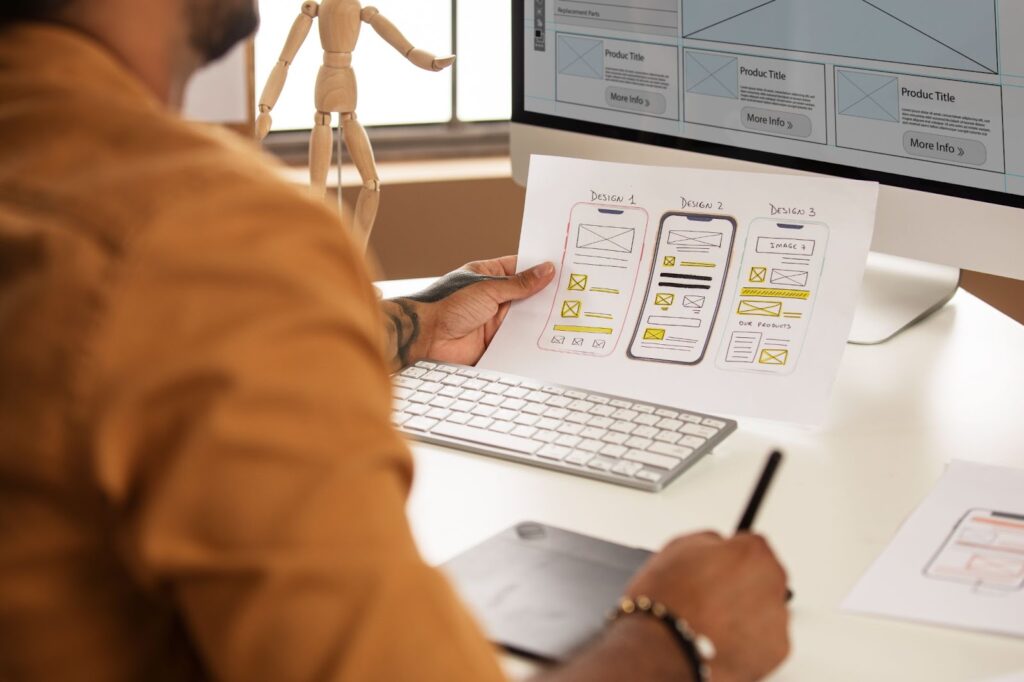In the realm of digital content consumption, whether one is perusing a news article, a blog entry, or even an advertorial piece, the majority tend to skim through rather than delve into every single word. This behavior stems from the inclination to seek out highlights that stand out, rather than committing to a thorough, word-by-word reading.
The inverted pyramid writing technique has long been employed to cater to this tendency, strategically placing the most crucial information upfront. However, in the contemporary landscape, merely adhering to this approach falls short in maintaining the interest of today’s audience.
A growing trend among leading publishers involves a departure from conventional flat text-and-image formats toward more dynamic and interactive content. This shift aims to elevate engagement levels, enhance retention rates, and ultimately boost conversion metrics. Leveraging advancements in web design and accessible creation tools, crafting such interactive articles has become not only feasible but also cost-effective like never before.
Harness the Power of Show/Hide Interactivity in Your Articles
The interactive feature of show/hide micro-interactions offers an innovative way to serve enriched content to your audience. The premise is simple: upon clicking, the users are treated to additional layers of information, be it text, images, or videos. This approach presents a myriad of benefits, not least being the ability to allow users to navigate your content at a pace they’re comfortable with. Best of all, they won’t be bombarded with all the details at once.
Take, for example, an engaging interactive article by WWF Canada titled “Priority Threat Management: A Better Way To Recover Species,” which was masterfully constructed using Vev. The article brilliantly utilises the show/hide add-on to give its users access to deeper insights into four key strategies pivotal to their mission. Instead of burying these insights in a sea of text from which they might just get overlooked, they command attention by standing alone in their own boxes, adorned with enticing plus symbols to suggest more content lies beneath.
What this show/hide feature does is it keeps the main article sleek, compact and focused, yet brimming with valuable insights upon deeper exploration. By using such an approach, you have the potential to generate an aura of intrigue and excitement around your content. Users are not just passive readers, but active participants on a journey to uncover new knowledge. It’s akin to unwrapping a gift — each click holds the promise of something valuable, making the user experience nothing short of thrilling.
Benefits of Using Show/Hide Interactivity:
- Tailored User Experience: Allows users to delve into your content at their own comfort level, avoiding information overload;
- Highlighting Key Content: Draws attention to the primary ideas by placing them in distinct boxes;
- Clean Design: Maintains a neat and user-friendly article layout, while still offering a wealth of information;
- Building Intrigue: Creates a sense of suspense and anticipation, driving user engagement and interaction.
Remember, creating great interactive content is about balancing user curiosity with valuable insights. Optimizing the show/hide feature can make a difference in how your audience engages with your articles.
Transforming Narratives with Scrollytelling: Impactful Photos and Videos
The rise of digital storytelling has ushered in innovative techniques like scrollytelling that leverage the power of photos and videos to narrate a story. One remarkable illustration of this method can be found in an interactive report by the New Yorker, detailing the realities of detention camps in China.
The report uses captivating monochromatic images that respond to the user’s scroll movements: moving sideways, upwards, and sometimes even rotating around — creating an immersive experience akin to walking through the actual scene. Each illustration is complemented by overlaying text that eases in and out as the users scroll, providing valuable context.
Scrollytelling doesn’t merely break up large chunks of text but takes visual storytelling to another level by embodying the adage, “show, don’t tell”. This technique is effective in maintaining user engagement and encouraging continual scrolling. More importantly, it communicates the emotional gravity of the subject matter, resonating with the audience on a deeper level.
Along with the discussed interactive elements, scrollytelling contributes to the creation of unforgettable content. It adds a layer of complexity and sophistication, leaving the audience amazed by the technical finesse involved. But more than that, it allows you to shine in the overflowing world of digital content.
Implementing Scrollytelling Effectively:
- Use innovative visuals that can transform with scroll movements;
- Integrate meaningful text overlays that provide valuable context;
- Incorporate emotions in storytelling to connect more deeply with your audience;
- Experiment with different scroll directions to break the monotony and keep users engaged.
Scrollytelling, when done right, adds a whole new dimension to storytelling, making your interactive articles a memorable experience for your readers.
Scroll Progress Visualisation: Engaging and Creative Approach
Scroll progress visualisations serve as an engaging and enjoyable way to inform users of their progress through an article. They can be creatively designed to complement the overall aesthetics of the website while enhancing the user’s reading experience.
The Washington Post’s interactive piece “Scaling Everest” showcases a striking use of this feature. On initiating the journey by clicking a button labeled “Climb Everest”, users are transported to the bottom of the webpage, mimicking the experience of standing at the base of the mountain.
With every scroll, users “ascend” up the webpage, simulating the experience of climbing the real Everest. Here, the scroll progress bar is ingeniously designed as an illustration of the mountain. This immersive form of scrollytelling transports the users to a different geographical and historical context, creating a compelling narrative through micro-interactions, illustrations, and animations.
How to Effectively Use Scroll Progress Visualisation:
- Use scroll progress visualisation to indicate how far users have scrolled, improving their navigational experience;
- Design this feature to align with the overall aesthetic of the site for a cohesive look;
- Try transforming the scroll progress indicator into an engaging storytelling element;
- Use micro-interactions and animations to enhance the user experience.
With a thoughtful approach, scroll progress visualisation can add an engaging and interactive layer to your articles, making them stand out.
Scroll Zoom: Adding Depth and Perspective
By adding depth and perspective to an interactive article, the scroll zoom technique offers an immersive and visually appealing experience. As an element changes size gradually on scrolling, users are drawn into a detailed narrative, enhancing the overall storytelling effect.
In an interactive article by the Sydney Morning Herald, scroll zoom has been used creatively to emphasise data related to air traffic during the Covid-19 pandemic. This technique not only made the data visually stimulating but also underscored the magnitude of the pandemic’s influence on air travel.
Tips for Implementing Scroll Zoom in Your Articles:
- Use scroll zoom to highlight key details in your visual data;
- Use this technique for visual storytelling to enhance user engagement;
- Aim for a smooth transition as the element changes size, maintaining visual coherence;
- Ensure the zoomed element complements the overall design and doesn’t overpower other elements.
Scroll zoom can be a compelling technique to enhance visual storytelling in your interactive articles, providing your readers with an engaging and immersive experience.
Interactive Before/After Imagery: A Picture Worth a Thousand Clicks
Incorporating a before/after image slider is an excellent strategy to bring interactivity into your content. This feature allows users to uncover different image states, thereby transforming them from passive viewers to active participants in the story-telling process.
A compelling instance of this technique is seen in the advertorial for the Google Pixel 7 Pro, developed using Vev. The image compare slider provided in this feature-rich platform is ingeniously used to demonstrate the superior camera quality of the phone in contrast to other models. Rather than merely telling them about the quality, users can interactively compare photos themselves by dragging the slider from left to right.
This interactive design technique facilitates a more exploratory form of storytelling, where users feel like they are discovering the information for themselves. This approach is not just engaging but also highly persuasive, especially in advertorial content where the objective is to convince and convert.
Effective Ways to Utilize Before/After Images:
- Use this technique to highlight product features, just like the Google Pixel 7 Pro advertorial;
- Implement it to demonstrate transformation – be it in fitness, interior design, beauty, or any field where visual transformation plays a crucial role;
- When dealing with complex concepts, visual comparisons can simplify understanding and boost retention;
- Always ensure the before/after images are high-quality and the changes between them are noticeable.
Remember, interactive before/after images provide your readers with a dynamic and engaging way to interact with your content, making it more memorable and impactful.
Breaking Boundaries with Horizontal Scrolling
Switching from vertical to horizontal scrolling presents readers with an intriguing deviation from the traditional vertical flow of content. This scroll-triggered interaction subtly disrupts the long-form content, adding a delightful element of surprise to the user experience.
An exemplary implementation of horizontal scrolling is seen in a Message Lab article about rebranding. Here, a horizontally scrolling timeline breaks up the long-form content while illustrating the timeline progression effectively. With its inherently linear and left-to-right nature, a timeline is naturally suited for horizontal representation, making information delivery more engaging and intuitive.
Tips to Leverage Horizontal Scrolling:
- Use this feature to break monotony in long-form content;
- It works well with linear content such as timelines, progressions, and comparisons;
- Don’t overuse it. Excessive horizontal scrolling might disorient users;
- Always ensure the smooth transition from vertical to horizontal scrolling.
Amplifying Interactive Experience with Audio
Incorporating audio elements in interactive articles enriches the multimedia experience, providing a sensory addition to visuals and text. Triggered by actions like clicks, hovers, and scrolls, or playing automatically upon page load, the audio can vary from micro-interaction indications to prominent sound effects or narrations.

An excellent application of audio use can be seen in an interactive article by 1News. Rather than solely relying on the written text, the article allows the author to narrate the story, offering users the option to listen instead of — or along with — reading.
Effectively Using Audio in Your Articles:
- Use audio to enhance interactivity and supplement visuals and text;
- Include storytelling elements such as narrations or sound effects for an immersive experience;
- Implement playback controls to maintain an enjoyable user experience;
- Opt for high-quality audio to complement the quality of your content.
Audio not only enhances the sensory experience but also adds depth to your storytelling, creating a more engaging and immersive interactive article.
Breathe Life into Data with Animated Charts
Animated charts offer a visually appealing method to illustrate data, transforming static data into an engaging visual experience. By animating on scroll, hover, or click events, these charts can effectively draw and hold visitors’ attention.
A stellar example of animated charts can be seen in a ServiceNow report, put together using the Vev platform. As users scroll down, pie chart segments assemble themselves, adding an interactive element while presenting crucial statistics in a visually appealing format.
Tips for Creating Effective Animated Charts:
- Utilize animation to highlight critical data points;
- Aim for smooth transitions in animations to enhance visual appeal;
- Ensure the animated charts align with the overall aesthetics of your article;
- Avoid overcomplicating animations. Simple and clear animations often make stronger impacts.
Discover More with Image Hotspots
Image hotspots transform static images into interactive exploration spaces. By adding clickable labels to your photos, you create an opportunity for readers to uncover more information themselves, adding an element of surprise and engagement.
An interactive advertorial for Mercedes Benz showcases effective use of this feature. Users can click on various parts of the vehicle image to learn more about its features. By not overwhelming users with information at once, this user-triggered interactivity enhances content engagement without detracting from the main narrative.
Implementing Image Hotspots Effectively:
- Use hotspots to highlight specific features in images;
- Ensure hotspot indicators are clearly visible and easy to interact with;
- Make the revealed information concise and value-packed;
- Use a balance between the number of hotspots and the image size. Too many hotspots might confuse users.
Using interactive features like animated charts and image hotspots can dramatically transform the way users engage with your articles, making them more immersive, engaging, and memorable.
Conclusion
In conclusion, as digital content consumption evolves, it’s evident that catering to the preferences and behaviors of modern audiences is paramount. While traditional writing styles like the inverted pyramid remain valuable, the shift towards interactive content signals an exciting direction for publishers seeking to captivate their audience in a dynamic and engaging manner. By embracing these advancements in web design and creation tools, publishers can forge deeper connections, foster longer-lasting impressions, and ultimately drive greater success in the digital landscape.

